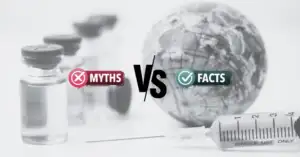Certain pharmaceutical products require specific temperature control for storage and transportation and to be maintained until administered to the patients. They are classified as cool chain) requires temperature control between 2-8 deg Celsius) and Cold chain products requiring temperatures below 0 degrees. These products are temperature sensitive and need strict controls to maintain their usability. The manufacturing of such products is always conducted under the strictest environmental controls. The real challenge exists once the product is released on the market and requires diligent and specialised logistics support. Cool and cold chain pharmaceutical logistics is a much-specialised area. It involves temperature-controlled transport and storage of the therapeutic goods at recommended temperatures in order to preserve their quality in terms of its potency, stability, security and safety. Few medicines like beta-lactam antibiotics, insulin injections, vaccines, and biological products, are sensitive to temperature changes and require strict temperature control all through the supply chain. Elevated temperatures or extremely low temperatures may have an impact on a drug’s chemical stability and potentially change its physical qualities. This results in making the product non usable. Temperature control is crucial for many such pharmaceutical products because damaged pharmaceuticals can have detrimental effects on both health and wellness and such damaged goods need to be destroyed causing economic loss to the manufacturer. It is obligatory for the pharmaceutical organisations involved in cold chain products to maintain environment controls at production as well as during the entire logistics and the entire supply chain activities. The environmental controls at production, warehousing and transport should be traceable and documented and can be requested by the regulatory authorities for verification.
The Essential Elements of Pharmaceutical Logistics for Temperature Controlled products are listed below:
- Cold Chain Management: This process entails keeping pharmaceutical items at the proper temperature as they move from production facilities through distribution hubs, then on to transportation and finally to the final consumer. To ensure that the temperature is constantly kept within the advised range, specialised equipment, monitoring systems, and protocols must be used. Automated temperature controllers along with manual temperature readers are usually installed at the factories and warehouses. Specialised vehicles equipped for carrying cold chain products are used for transportation. Data-loggers are used with every pack to record the temperature during transportation.
- Temperature Inspection: It is essential to continuously monitor the temperature in order to spot any temperature extremes during storage or transportation. At numerous points along the supply chain, temperature readings are measured and recorded using temperature sensors, data loggers, or wireless monitoring systems. This information aids in recognizing any potential threats to product quality and ensuring that temperature standards are being followed.
- Packing and Insulation: To safeguard pharmaceutical products from temperature changes during travel, suitable packaging and insulation materials are utilised. To provide a regulated climate inside the package and protect the items from high temperatures outside, insulated containers, thermal blankets, and cooling or heating devices (for extremely cold weather conditions) are used.
- Facilities for Cold Storage: Pharmaceuticals that need to be stored at specific cold temperatures must be kept in cold storage facilities like freezers and refrigerators. To constantly maintain the needed temperature range, these facilities are outfitted with precision temperature control systems and backup power supplies. Walk-in coolers and walk-in cold rooms are specially designed to store large quantities of cold-chain products
- Transport: To make sure the goods stay within the specified temperature range throughout travel, temperature-controlled transportation methods are used, such as refrigerated vehicles, insulated containers, or specialised packaging. Transport vehicles may use refrigeration units or internal temperature control systems to maintain the proper temperatures.
- Regulatory Conformity: Temperature-controlled pharmaceutical logistics must abide by a number of legal requirements and professional norms. For temperature control, storage, and shipping of pharmaceutical items, regulatory agencies like the European Medicines Agency (EMA) and the U.S. Food and Drug Administration (FDA) have specific guidelines. Good distribution practices (GDP) provides recommendations for handling, storing and transporting products requiring cold-chain.
- Quality Control: To guarantee the integrity of temperature-controlled pharmaceutical logistics, quality management systems are essential. The quality guidelines for handling, storing, and shipping pharmaceutical items are outlined in Good Distribution Practices (GDP) and Good Manufacturing Practices (GMP). In order to ensure compliance and reduce risks, routine audits, validations, and employee training are carried out. The workforce involved in cold-chain logistics need to be highly skilled and would require training based on the new requirements that may arise for handling cold-chain products.
Overall, temperature-controlled pharmaceutical logistics operations are a crucial link in the supply chain for healthcare, preserving the efficacy and quality of pharmaceuticals, guaranteeing patient safety, and ensuring their delivery in top condition.





